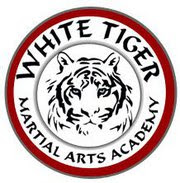KENPO 21 Basic Concepts and Principle of Technique
This is the first time we have published these as a complete list with basic explanation - when these are demoed and taught in Class there is far more explanation that needs to be seen, felt, and then practiced
Each of these CP are used with a technique you know well eg Delayed Sword - when practicing Delayed Sword as a drill you already know the block, kick, strike sequence, you know the variations
- you then work the technique focusing on each CP, Speed, Power, Accuracy, etc
This is then done through all the KH eg Alternating Maces, Sword Of Destruction, all the MK eg Five Swords, Thundering Hammers, eventually on through the 156 then the 240
You can practice all the CP for individual blocks and strikes
They also apply when using the Sticks and Knives
1. Erect Posture
- there are many positive benefits derived in keeping an erect posture. It allows for ease of movement and quick directional change will also keep you from leaning and over extending.
2. Good Balance
- is enhanced by erect posture. The body, as well as the joints, must be relaxed and flexible to insure good balance. It also prevents you from leaning and over extending.
3. Relax
- relaxing enhances good balance. When the body is relaxed it becomes supple which allows for quick reaction when attacking or defending. It aids greatly in the acceleration of your strikes.
4. Speed-
is a primary ingredient of skill, which must be coupled with accuracy. Although this combination takes precedence over power, speed can contribute greatly to increasing power.
5. Accuracy
- supported by speed is extremely necessary to render maximum effect. It involves two aspects - movement precision and precise targets. Many vital areas do not require a lot of force to achieve immobility. To insure accuracy as well as effect, proper angle is of utmost importance.
6. Angles
- the proper angles assure accuracy, body alignment and economy of motion. It must be remembered that whatever angle can be used as a defense, can also be used as an offense by the attacker or defender.
7. Body Alignment
- places angles into perspective. It compels body parts to coordinate to move in one direction (or opposite directions). It is no more than angles in harmony traveling to the same target (or directly opposite targets) in the hope of maximizing your blocks or strikes (or a combination of both).
8. Back Up Mass
- is a result of proper body alignment. When this occurs, the weight of your body positions itself in line with, and behind of the action being rendered.
9. Economy of Motion
- entails avoiding wasteful angles, and the management of strength (power) in obtaining the most of your efforts in the shortest possible time. Makes you aware that time is crucial.
10. Timing
- is a concept that incorporates the principle of economy of motion. In essence it is the regulation of speed and coordinated effort in synchronization with an opponents movements. Perfecting this rhythmatic marriage makes victory more certain.
11. Telegraphing
- can be used as a form of deceptive timing to disrupt your opponent thought patterns. It also is a form of body language, which can work against you. This of course would depend upon your conscious or unconscious involvement.
12. Coordination
- this process involves the synchronization of body (strength), mind, and breath so that they reach harmoniously and instinctively. It often entails not one move, but a series of moves in a precise time slot.
13. Focus
- is the concentration of mind, body, breath and strength culminating in the exact same instant when blocking or striking a specific target.
14. Power
- is the magnification of force aided by concentrated focus. Its capacity is proportionate to the physical strength, force or energy exerted.
15. Torque
- is a preliminary stage of focus that adds to power. It is the utilization of rotating force to position the muscles to allow for ease of movement, extension and body flow and increased power.
16. Body Momentum
- is the concept that utilizes momentum to increase power. It is the uniting of mind, breath and strength while shuffling forward or reverse with the weight of the body, dropping the weight of the body vertically or diagonally, and rotating the body.
17. Marriage of Gravity
- is the concept that utilizes gravity to increase power. It is the uniting of mind, breath and strength while dropping the weight of your body.
18. Penetration
- involves depth of focus. It is the extension of power beyond the selected target to insure desired force and compensate for distance
19. Transition
- These are movements within moves, or stages between moves which gap defense or offense. In many instances it is the stage which turns defense into an offense or vice versa.
20. Distance
- can become an ally or an enemy. It is a crucial factor second only to environment. Success or failure during combat is often determined by your ability to close or create distance between you and your opponent.
21. Cover
- this is a form of transition that leads you back to a position of combat readiness. It is an evasive transition that checks your opponent's action and places you in a preparatory position to once again defend or attack
